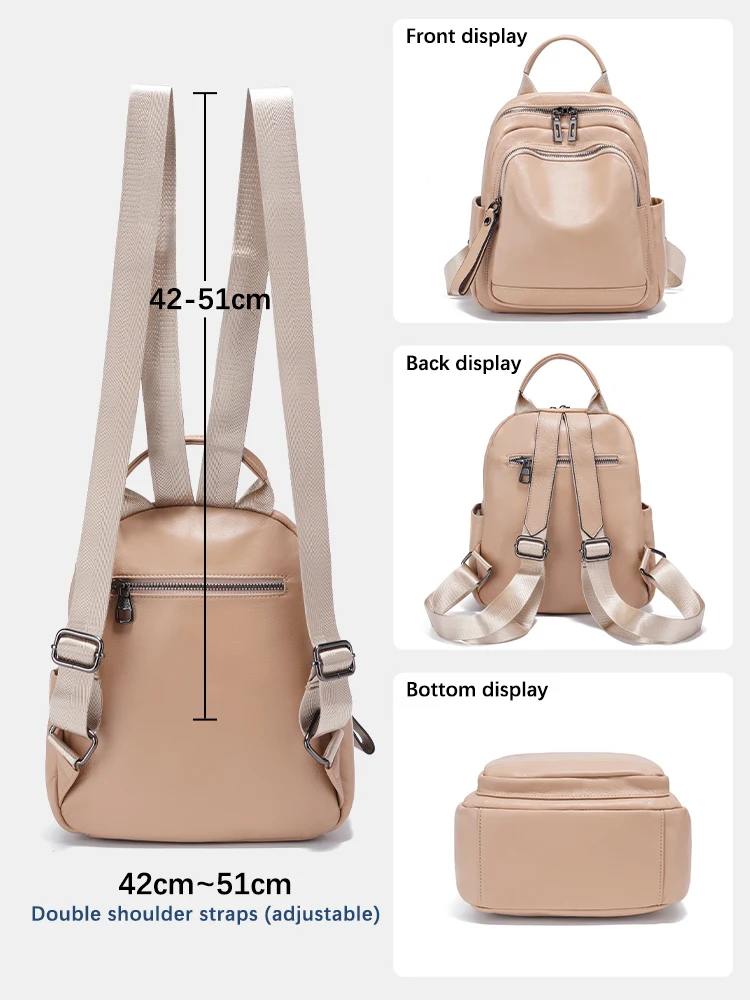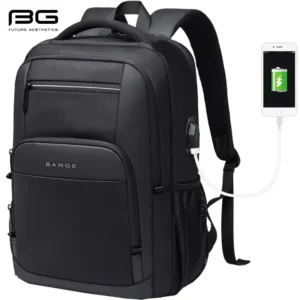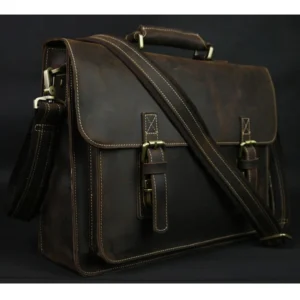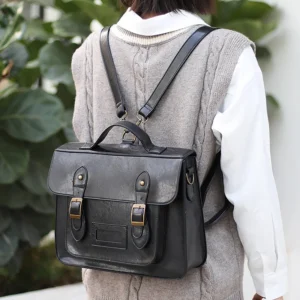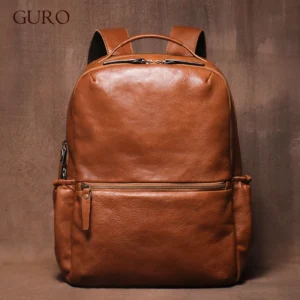Introduction
Ever spent precious morning minutes frantically digging through your backpack, searching for that important document or charger? A disorganized work bag doesn’t just waste time—it creates unnecessary stress and projects an unprofessional image. Studies suggest professionals waste up to 15 minutes daily searching for misplaced items, adding up to over 60 hours annually of lost productivity.
But imagine starting your workday differently: reaching confidently into your bag and immediately finding exactly what you need. An organized office backpack transforms your daily routine by:
- Saving valuable time during busy workdays
- Reducing morning stress and frustration
- Enhancing your professional appearance and readiness
- Improving overall work efficiency and focus
This transformation isn’t just about aesthetics—it’s about creating systems that support your professional performance. The organization principles we’ll explore work equally well for premium leather backpacks for professionals and other work bags, turning your daily carry from chaotic to composed in simple, actionable steps.
Whether you’re carrying a classic office professional leather backpack or another style of work bag, these strategies will help you maximize efficiency while protecting your investment in quality leather work backpacks.
Foundation: The Complete Backpack Reset
Before implementing any organization system, start with a clean slate. The complete backpack reset is your foundation for lasting organization:
Empty everything: Remove all items from your backpack—every pocket, compartment, and hidden corner. This reveals forgotten items and gives you a true inventory of what you’re carrying daily.
Sort with purpose: Evaluate each item using these criteria:
* Essential for daily work (keep in backpack)
* Occasionally needed (consider if it earns its space)
* Rarely/never used (remove permanently)
* Trash or belongs elsewhere (discard or relocate)Clean thoroughly: Before returning items, clean your backpack properly:
* For full-grain leather backpacks, use appropriate leather cleaner and conditioner
* For fabric sections, spot clean with mild soap and water
* Allow to dry completely before refilling
This reset creates an intentional starting point for organization. Plan a mini-reset weekly (taking just 5 minutes) and a deeper monthly reset to maintain your system.
The reset isn’t just cleaning—it’s reclaiming control over your daily carry. This foundational step sets you up for success with the mastering backpack organization strategies that follow.
Strategic Organization Principles for Professional Efficiency
With your backpack reset complete, it’s time to implement core organization principles that transform how you pack and access your work essentials:
Item Categorization: Group similar items together based on function rather than randomly distributing them. Common categories include:
* Technology (laptop, chargers, adapters)
* Documents and paperwork
* Writing instruments
* Personal items (keys, wallet, medications)
* Sustenance (water bottle, snacks)Zone System: Assign specific compartments in your backpack for specific categories. This creates predictable locations that eliminate searching:
* Front quick-access pockets: items needed frequently or urgently
* Main compartment: larger work essentials and documents
* Padded laptop section: computing devices only
* Side pockets: water bottle and small grab itemsAccessibility Hierarchy: Position items based on frequency of use:
* Most used items: quick-access locations
* Occasionally used items: secondary compartments
* Rarely used items: deeper storage or reconsidered completelyErgonomic Distribution: Place heavier items (laptop, books) closest to your back to reduce strain and maintain proper posture. Distribute weight evenly rather than concentrated in one area.
Prime Real Estate Allocation: Reserve the most accessible spots for truly essential items that need immediate retrieval, not for items you rarely access.
These principles transform how you interact with your bag, making your organizing leather backpack guide implementation more intuitive. The structured approach works particularly well with quality men’s leather work backpacks that feature purposeful compartment design.
Essential Organization Tools for the Modern Professional
The right organization tools dramatically enhance your backpack’s functionality, creating order from chaos while protecting your valuable items:
Tech Organization Tools:
* Cable organizers with elastic loops or pockets for preventing tangled messes
* Cord wraps for individual cables to prevent fraying and knots
* Tech pouches with multiple compartments for adapters, drives, and peripherals
* Laptop sleeves for additional protection even in padded compartments
Document Management:
* Slim document folders that maintain paperwork organization without bulk
* Water-resistant envelope pouches for protecting important papers
* Divider tabs for separating different projects or document types
* The “limbo folder”—a designated place for papers in transition that need processing
Small Item Control:
* Mini pouches for grouping tiny items that would otherwise float loose
* Pen organizers that prevent ink marks and lost caps
* Mesh zippered pockets for visibility with security
* Key leashes or clips to attach to internal hooks
Space Optimization:
* Compression packing cubes for clothing items during overnight trips
* Collapsible containers that adjust to contents
* Stackable containers that utilize vertical space
* Multi-purpose items that serve multiple organization needs
The “one home” rule is essential: every item must have a designated location. This eliminates the “floating item” problem where things end up in different places each day.

These organization tools work particularly well with leather laptop backpacks designed with professionals in mind, enhancing their inherent organization features.
Professional Item Organization by Category
Tech Gear Organization
Properly organizing your technology ensures protection, accessibility, and functionality:
Laptop/tablet placement: Always store in dedicated padded compartments, screen facing toward your back for maximum protection. Use a sleeve for additional cushioning.
Cable management: Roll cables using the 6-inch rule (wrap around four fingers), secure with velcro ties or silicone organizers, and store in a dedicated tech pouch.
Peripherals organization:
- Wireless mouse: Protected pocket or case to prevent button damage
- Portable drives: Padded storage away from items that could create pressure
Adapters: Grouped by function in labeled sections of tech pouch
Power solutions: Store power banks and chargers in a centralized location, ensuring cables are properly wrapped and connections protected from bending.
Document & Stationery Management
Maintain document integrity and writing tool accessibility:
Notebooks and portfolios: Store flat against the laptop compartment to prevent bending or use a slim document sleeve.
Filing system: Use color-coded folders for different projects or a single expanding file with labeled dividers for multiple categories.
Writing instrument organization: Use a dedicated pen case or elastic loops to prevent loose pens from marking bag interiors or breaking.
Business cards and small documents: Keep in a designated card case or small envelope pouch rather than loose where they can bend or tear.
Personal Essentials
Secure your valuable personal items for quick access without compromising organization:
High-value items: Create a dedicated “quick grab” pocket for wallet, keys, and phone that remains consistent for muscle memory access.
Personal care items: Group in a small waterproof pouch to prevent spills while keeping items like hand sanitizer, lip balm, and tissues accessible.
Medication and health items: Store in protective cases with clear labeling, separate from liquids or items that could cause damage.
Eyewear protection: Use a rigid case for glasses or sunglasses, positioned away from heavier items that could cause crushing.
Professional Sustenance
Maintain energy without risking your gear:
Water bottle security: Always use leak-proof containers, stored upright in designated side pockets away from electronics.
Food container placement: Use sealed containers only, placed in locations where potential spills won’t damage electronics or documents.
Temperature considerations: Keep cold items separated from electronics using insulated pouches to prevent condensation damage.
Properly categorizing your daily carry essentials for professionals creates intuitive access while maximizing protection. This approach works exceptionally well with 15-inch leather laptop backpacks that provide ample room for proper segregation of items.
Advanced Organization Strategies for Maximum Efficiency
Once you’ve mastered the basics, these advanced strategies will elevate your organization to peak performance:
- The Modular Approach
Create self-contained kits for different professional needs that can be swapped in or out as needed:
* Presentation kit: remote, adapters, backup materials
* Client meeting kit: business cards, samples, proposal materials
* Travel tech kit: all necessary chargers and adapters
This modular system allows you to quickly transform your backpack’s contents without starting from scratch.
- Scenario-Based Loadouts
Develop standard configurations for different professional scenarios:
* Regular office day: standard tech, lunch, minimal documents
* Meeting-heavy day: presentation materials, expanded note-taking tools
* Travel day: additional chargers, comfort items, expanded refresh kit
Document these loadouts as simple checklists for quick morning preparation.
- Visual Organization Systems
Implement color-coding to create instant recognition:
* Consistent pouch colors for different categories (blue for tech, black for documents)
* Colored cable ties or dots to distinguish similar cables
* Matching zipper pulls for related compartments
- The Evening Reset Ritual
Spend just 2 minutes each evening:
* Remove unnecessary items collected during the day
* Replenish consumed supplies
* Reposition shifted items to their proper homes
* Prepare any additional items needed for tomorrow
- Digital Duplication Strategy
Reduce physical bulk by digitizing when possible:
* Scan and store documents in cloud storage
* Use digital business cards and payment methods
* Take photos of whiteboard notes rather than keeping paper
* Maintain digital copies of frequently referenced materials
These advanced strategies complement the design features found in executive-style backpack features and are particularly effective with versatile leather briefcase backpacks that adapt to different professional contexts.
Maintaining Your Organized System: Daily & Weekly Practices
Even the best organization system requires maintenance. These simple routines ensure lasting organization:
90-Second End-of-Day Routine:
* Remove trash and receipts that accumulated during the day
* Return items to their designated homes
* Check for items that have shifted out of place
* Ensure electronics are properly stored and protected
* Place the most important items for tomorrow in prime locations
Weekly Maintenance (5 minutes):
* Empty main compartments completely
* Wipe down interior surfaces
* Check for items that haven’t been used all week
* Reassess if all current items justify their space
* Reset any organization tools that have become disheveled
Monthly Deep Reset:
* Perform a complete backpack emptying and cleaning
* Evaluate the effectiveness of your organization system
* Adjust container sizes based on changing needs
* Deep clean organization tools (pouches, cases, folders)
* Replace or repair any worn organization tools
The “One In, One Out” Rule:
Apply this principle whenever possible—when adding a new regular item to your backpack, identify something to remove, maintaining equilibrium in your system.
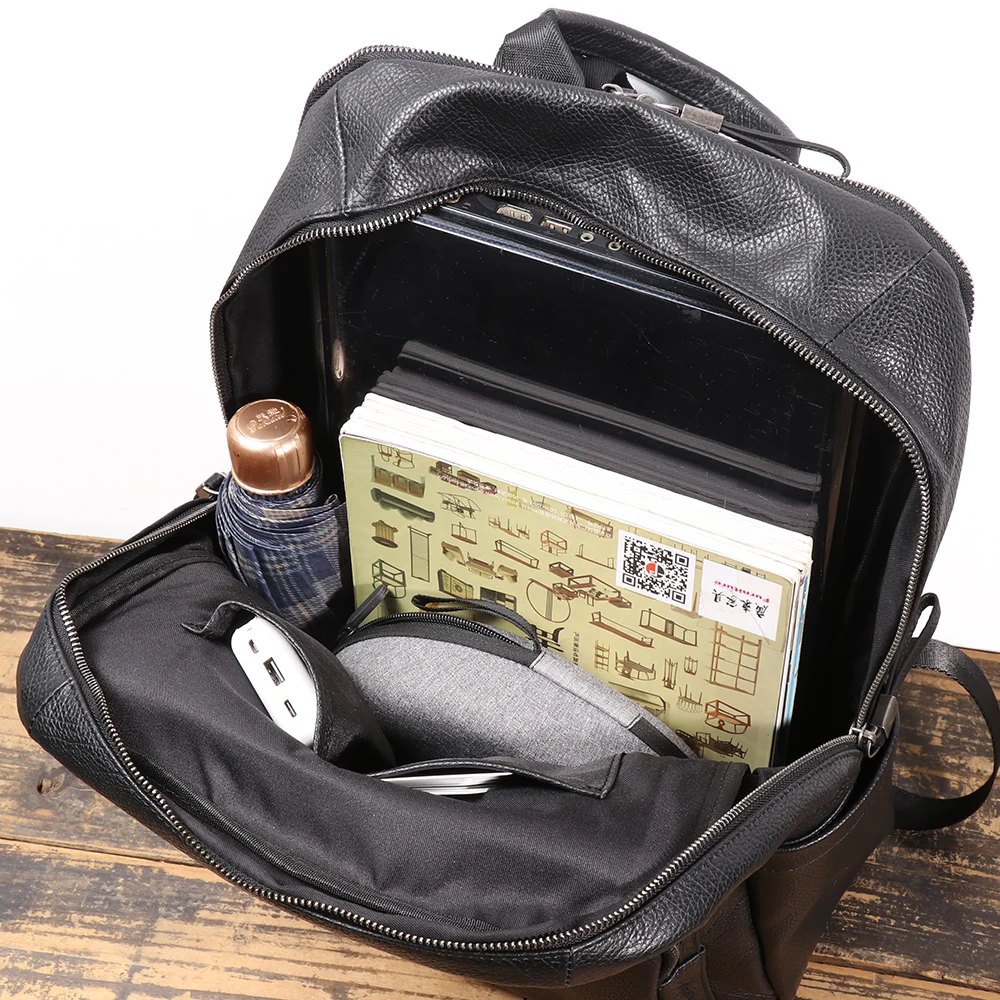
These maintenance practices ensure the longevity of your organization system while also protecting your investment in a quality bag. For additional specialized guidance, explore mastering organization in leather bags for material-specific maintenance tips.
Selecting the Ideal Professional Backpack for Organization
The foundation of effective organization begins with selecting the right backpack. Look for these organization-enhancing features:
- Thoughtful compartmentalization:
- Multiple dedicated sections rather than one large space
- Variety of pocket sizes for different items
- Padded laptop compartment with secure closure
Quick-access front pockets for essentials
Intelligent access design:
- Wide-opening main compartments for visibility
- Strategic zipper placement that allows access to specific areas
- Top and side entry options for different situations
Panel access for professional environments
Interior visibility features:
- Lighter-colored linings that don’t hide items
- Contrasting material colors between different compartments
Built-in organization panels for small items
Material considerations:
- Durable exteriors that maintain structure
- Quality hardware that operates smoothly
- Water-resistant properties to protect contents
- Stain-resistant surfaces for professional appearance
Remember that a quality backpack is an investment in your daily productivity. The right professional backpack creates the infrastructure for organization success, while lower-quality options often lack the necessary compartments and durability to maintain organization systems long-term.
14 Inch Leather Laptop Backpack, Brown Leather Backpack, Men's Leather Backpack, Vintage Leather Backpack
Price range: $177.28 through $199.12 Select options This product has multiple variants. The options may be chosen on the product pageDesigner Men's Backpack, Men's Leather Laptop Backpack, Men's Leather Work Backpack
Price range: $158.04 through $160.04 Select options This product has multiple variants. The options may be chosen on the product page15 Inch Leather Laptop Backpack, Leather Briefcase Backpack
$332.96 Select options This product has multiple variants. The options may be chosen on the product page17 Inch Leather Laptop Backpack, Men's Leather Travel Backpack, Men's Leather Work Backpack
Price range: $106.28 through $143.88 Select options This product has multiple variants. The options may be chosen on the product pageWomen's Leather Backpack, Women's Leather Work Backpack
Price range: $119.36 through $128.52 Select options This product has multiple variants. The options may be chosen on the product pageFull Grain Leather Backpack, Men's Leather Laptop Backpack, Men's Leather Work Backpack
$353.46 Select options This product has multiple variants. The options may be chosen on the product page
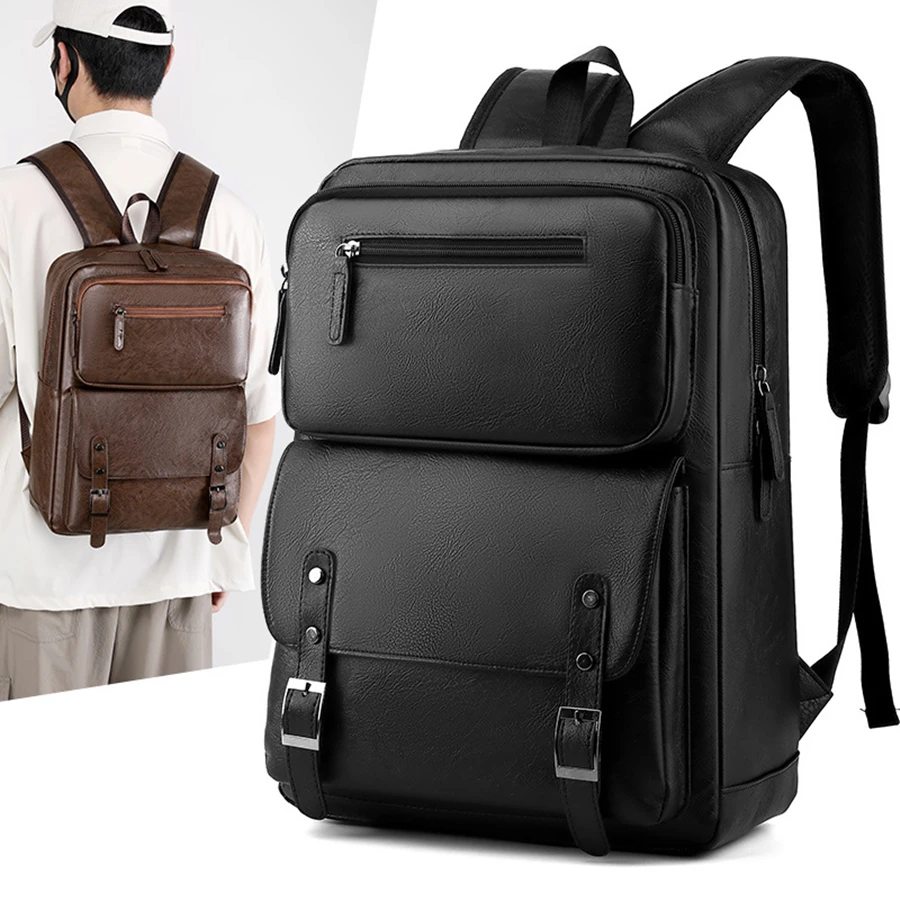
For more details on what makes a quality professional backpack, explore our guide to understanding material quality in professional backpacks. For women seeking professional options with superior organization, consider our collection of women’s leather work backpacks.
Frequently Asked Questions About Office Backpack Organization
What are the absolute essential items every professional should keep in their backpack?
The core essentials include your primary work device (laptop/tablet), charger, a small tech emergency kit (USB drive, adapter), notebook and pen, business cards, wallet, keys, phone, water bottle, and a small personal care kit. Everything else should earn its place through frequent use or critical importance.
How often should I completely reorganize my work backpack?
Perform a quick daily reset (under 2 minutes), a more thorough weekly assessment (5 minutes), and a complete reorganization monthly. Additionally, reassess your entire system seasonally as your carrying needs change with weather and projects.
Are specialized organization tools and pouches worth the investment?
Quality organization tools are worth the investment as they prevent damage to more expensive items, save time daily, reduce replacement costs from damaged goods, and extend the life of your backpack by preventing interior wear. Focus on versatile, durable options rather than single-purpose gadgets.
What’s the most effective approach to managing multiple cables and chargers?
Label each cable near both ends, use distinct colored ties or wraps to visually differentiate them, store in dedicated cable organizers with individual elastic loops, and consider shorter cables for daily use to reduce tangling and bulk.
How can I prevent spills and damage from liquids in my backpack?
Always use double-sealing water bottles, position liquids away from electronics and documents, use waterproof pouches for tech items, place potentially leaky items in sealable plastic bags, and remember that upright storage is safer than horizontal for most containers.

